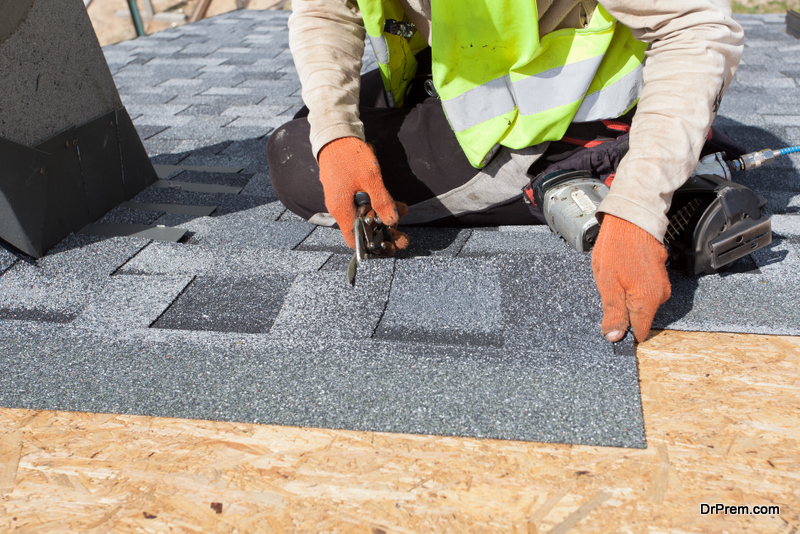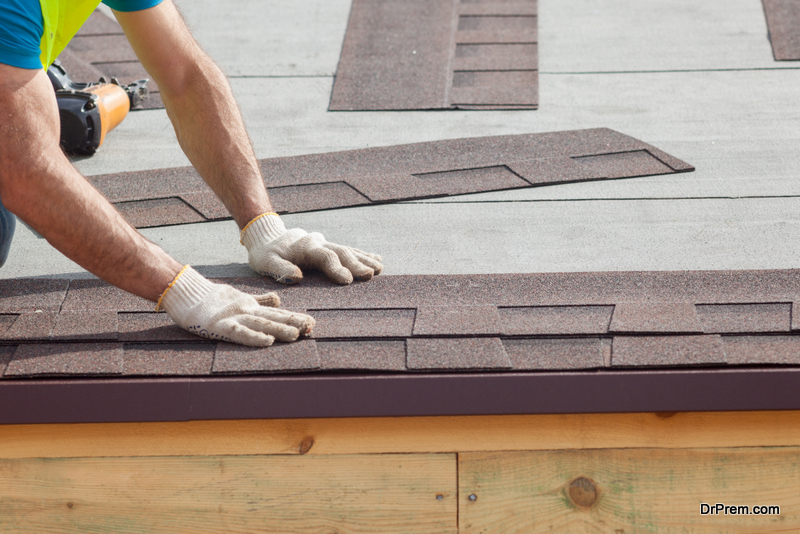To simply put it together, a bio-based composite is a combination of two or more different materials that in combination become stronger than their strengths. This material now has properties that are different from the properties of its constituents.
To begin with, let’s first discuss what is a bio-based composite roof made from? The bio-based composite roof is manufactured from soy oil-based resin and cellulose fibers in the form of paper sheets made from recycled cardboard boxes.
You might j be familiar with different roofing materials but bio-based composites are relatively new. One of the reasons that it’ll replace all the old methods would be its eco-friendliness according to most roofing companies in Albuquerque, NM. Also, they are made from renewable resources including corn, and soybeans among others. They prevent depletion of timber resources and are not petroleum-based like other composite materials. With the increase in its usage, new designs will be explored.
Examples of bio-based composite
Following are the examples of bio-based composites.
- cellulosic
- starch and soy-based plastics
- polylactides
- lignin-based epoxy
- soy-based resins
- polyhydroxyalkanoates
Advantages of bio-based composite roof
 Here we will discuss some of the benefits of bio-based composite roofs.
Here we will discuss some of the benefits of bio-based composite roofs.
1. Low Cost
Well, who wouldn’t want their roof to be replaced by staying within a budget? We know all of us would love that. Bio-based composite roofs can imitate other roofing materials like stone and metal thus giving your roof an appealing look.
2. Eco-friendly
Since they are made from renewable resources, bio-based roofs contribute to the environment. Unlike plastic composites which are polluting the environment, bio-based composites are biodegradable and do not cause any harm to us or the environment. So, they are not adding any waste to the already polluted environment whereas other roofing materials do so immensely.
3. Relative Strength
Most plastic polymers that we come across are not strong enough to be used in aerospace, construction, or automotive industries. On the other hand, bio-based composites are structured in a way that they can withstand heavy loads without causing any damage and are quite durable as well.
4. Petroleum Free
Since petroleum is a non-renewable energy source, its expenditure needs to be cut down. However, mainly all composites are petroleum-based and eventually lead towards a decline in petroleum reserves. While on the contrary, bio-based composites are petroleum independent and use plant fibers such as cotton, hemp, and flax.
5. Natural Fibers
Synthetic fibers are highly strong and stiff but they cannot be used for bearing load. While on the other hand, bio-based composites possess natural fibers which are light in weight but offer great strength to weight ratio and are highly stiff.
6. Long Lasting
Unlike some of the roofing materials, bio-based composite roofs are useful in the long run. They can last for about 50 years and even beyond that.
Disadvantages of bio-based composite roof
Like many other elements and composites, bio-based composites have some disadvantages. However since the advantages outweigh the disadvantages, these drawbacks are overlooked compared to the benefits since those are plenty.
1. Moisture Resistance
Although these components are extremely useful, they have a problem absorbing moisture which will eventually make them worn out with time. Therefore, in regions where the humidity is always above the normal level, it would be difficult for you to retain such a roof.
2. Photochemical Degeneration
Bio-based composites are not made UV resistant thus causing degradation of your roof and you’ll end up replacing it again which can prove quite expensive. Sun rays strike on the composites and fade their color and deteriorate their shape.
If researchers can provide a solution for these problems, then bio-based composite roofs will be the future of roofing. We’ll see a decline in our usage of fossil fuels. Moisture and light resistance is vital for damp and sunny climates. Otherwise, they are perfect for every other climate. Still, you can use them considering their many advantages.
CONCLUSION
With the air quality getting poorer and the rise in respiratory problems, people have finally realized the significance of using environment-friendly, sustainable, and biodegradable resources. With the increase in bio-based composites, the need for importing petroleum has lowered. As a result, carbon dioxide emission is decreasing and hence leading to an improvement in the quality of air.
Using natural products in the manufacturing of bio-based composites has produced numerous economic opportunities for the agriculture sector which in turn helps the economy of a country. The wastage problem also gets resolved as bio-based composites do not produce indestructible waste.
Why choose a bio-based composite roof?
Bio-based composites are a perfect choice for your roof as it is cheap, long-lasting, robust, and lightweight. Plus, it would give your house an attractive look without being a burden on your pocket.
Article Submitted By Community Writer




